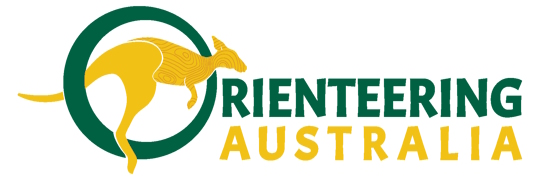How to Enter
Once you have selected a suitable course, completed the control card/collected your SI stick and taken a copy of the appropriate control descriptions, go to the registration table to pay your entry fee. You will then be given a copy of the map being used for that days event. When you are ready, make your way to the Start.
Start
The start of the event may be some distance from the registration area, so before you set off, check that you have:
- Your map and a plastic bag to protect it
- The control description list
- Your control card/SI stick
- A compass
- A whistle for safety
- A watch to check the time
The route to the start will be indicated by signs and/or streamers if it is not where you are now.
At the start, wait behind the sign indicating your course for the start official to allocate you a start time and write it on your control card if you have one. If you're using an SI stick, they may check the unique number on the stick and make sure you've cleared old data from the stick.Competitors doing the same course are separated by at least two minute intervals to minimise following. While you are learning about the sport, you may go around a course with a friend or family members if you wish.
Once the start calls out the start times or the clock sounds its long beep, move to the map boxes ready to pick up your pre-marked map.
For major competitions such as a Badge Event or State Championships, a pre-marked and bagged map will be provided for each competitor.
On the map, a red triangle indicates the start of the course. The position of each control is depicted by a red circle and the finish is marked by a double circle. The numbers beside each circle indicate the order in which you must visit the controls. This order corresponds with the order on your control description list.
On the course
Once you leave the Start area you need to decide on how to navigate to your first control.
Control sites are marked by orange and white, triangular markers, called flags. These are often hung from trees and bushes, generally 1m off the ground or they could be attached to a control stands. The control number may be found on the side of the stand or on top of the control unit attached to the top of the stand .
Flags have plastic punches attached to them which are used to mark the relevant box on the control card if these are beiing used. Each punch has a different patterned punch and this is used to indicate that you have visited the correct control site. When stands are used the punch is found on the top of the stand.If Electronic timing is being used, there will be a control unit on top of the stand ot attached to the flag inot which you insert your SI stick to register your time. The unit will beep to ensure you that it's worked.
You must visit the controls in their listed order.
- Orientate your map using linear features or your compass so that it is lined up with your direction of travel and the features on the ground. Try to match map features with what you see around and vice versa.
- Near controls, look for ground features that match those on your map rather than just searching for the orienteering flag.
- Be aware of the distances you are traveling
At the Control
When you get to the control, check that the feature and code number on the control flag or stand match your control description list. If you are sure it is the control on your course, use the punch on the stand to punch the corresponding numbered square on your control card, or insert your SI stick into the unit.
Move a short distance away from the control site and then plan your route to the next control.
If you are uncertain where you are:
- First try to relocate yourself. Use obvious, linear features such as tracks, fences or creeks, if available, or go back to your previous control.
- If you think you are completely lost and are unable to find where you are on the map, ask another orienteer for help or wait for assistance at any control you find. Someone will collect the controls after the course closure time and will be able to take you back to the assembly area. If you follow the safety bearing given at the start, you may be able to get back to the assembly area on your own.
- If all else fails, or if you are injured, stay still and blow your whistle. The emergency signal is six blasts at ten second intervals, repeated every two minutes. Anyone hearing this must abandon their course and come to your assistance.
At the Finish
At the finish banner, you will either punch with your SI stick, or have your time recorded on your control card which is handed to the finish officials. The card will then be checked to see that all the controls on your course have been visited.
Even if you have not completed your course, you must report to the Finish area so the event organiser knows that you have returned safely. You should ensure that you return by 'course closure' time or a search will be mounted.
Results
Provisional results for the event are displayed in the assembly area. Final results are published on the Orienteering Queensland website / Eventor website.
After the Event
You might like to discuss any problems you had on your course with a more experienced orienteer or coach so that you can learn from your mistakes. Keep your map so that you can study it and perhaps draw in the route that you took between controls. You may be able to see a better route choice than the one you took.




